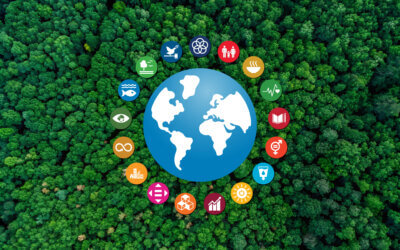As businesses of all sizes look to lower their carbon footprint, many turn to carbon offsets. These purchases can help organizations account for carbon emissions that are hard to eliminate in the near term, such as if you can’t completely cut down on airplane travel. But not all carbon offsets are created equal.
When buying carbon offsets, the idea is to fund projects that either:
- Remove greenhouse gases from the air (Removal Offsets), such as through afforestation and/or reforestation. By protecting and restoring actively logged forests, for example, more trees can grow to maturity and absorb more CO2 from the air.
- Prevent the release of new greenhouse gases into the air (Avoidance Offsets), such as through landfill gas capture or industrial gas disposal. Avoidance offsets can also involve funding renewable energy projects, for example, to ultimately reduce the reliance on fossil fuels.
All of these options can be worthy goals, but there can be a wide range in the quality of carbon offset projects.
In theory, each carbon offset represents the reduction of one metric ton (2,205 lbs) of carbon dioxide emissions equivalent. However, not all carbon offset projects have as much impact as they claim. That’s why it’s important to know how to find high-quality carbon offsets.
What Affects the Quality of Carbon Offsets?
The reasons why some carbon offsets are considered high quality can be manifold. Some of the most important characteristics of high-quality carbon offsets include:
Accurate emissions impact: You need to be sure that the amount of emission reductions that you paid for actually occurred. Look for offset providers with rigorous project verification standards and reporting processes that are inspected and approved by independent third parties.
Recent vintages: The vintage is the year a project generated the emissions reduction tied to the carbon offset that you purchased. Just like any capital project, good carbon offset projects tend to take time to fund their initial construction and ongoing operation, so you don’t necessarily need to limit yourself to brand new vintages. In general, vintages up to 5-10 years or so tend to be recent enough to help ensure you’re supporting incremental carbon removal.
Additionality: A good carbon offset project will have an impact that only happened because someone purchased the carbon offsets that it generates. For example, if a landfill leaks methane and someone uses carbon offset revenue to finance the construction and ongoing operation of a methane collection and destruction system, that’s additionality. Or, if a forest is being logged and carbon offset funding is used to purchase the land and protect the forest, that’s also additionality. However, if a forest is already protected and later someone tries to sell carbon offsets tied to that project, when the protection occurred regardless, that is not additionality.
No double selling/counting: You also want to be sure that you — and only you — own the emissions reduction that you purchased. No other entity should claim that same emission reduction. Look for carbon offset providers that take steps to avoid selling or counting the same offset more than once.
Transaction audits: The quality of a carbon offset supplier is also critical to your carbon offset purchase. Quality carbon offset suppliers will complete independent, third-party audits of all carbon offset sales every year. This gives customers the assurance that they got what they paid for.
How to Find High-Quality Carbon Offsets
To maximize your impact, it’s important to find carbon offsets with standards and processes in place that assure you of their quality. And with the number of carbon credits issued globally expected to increase by at least 20 times by 2035, according to EY, organizations need to be even more vigilant about what they’re buying to offset carbon emissions.
The first step to finding high-quality carbon offsets is to consider ones with reputable third-party verifications. Methodologies of leading carbon offset registries ensure that carbon offsets are additional, that emissions reductions are reported accurately, and that there’s no double counting.
“All credits issued from any of the major carbon standards (CAR, VCS, ACR, GS) will have undergone a robust verification process by an ISO accredited third-party verifier. These credits are also all tracked on registries to ensure emissions reductions are not double counted,” notes Second Nature.
These carbon standards providers:
- Establish proven scientific methods of carbon removal
- Inspect projects constructed by developers to ensure compliance with an approved methodology
- Inspect project operational data annually to verify that carbon emission reductions have occurred
Also consider third-party certifications, like from Green-e®. This certification requires carbon offsets to follow the major carbon standards, including the American Carbon Registry, the Climate Action Reserve, the Gold Standard, and the Verified Carbon Standard.
Then, the Green-e® Climate program, for example, goes beyond these carbon standards “by being the only program to monitor how offsets are transacted and advertised in the retail market, protecting both the buyer and the seller,” Green-e explains.
Beyond these third-party verifications and certifications, also consider what you want to achieve by purchasing carbon offsets. In some cases, buyers want to fund particular types of carbon offset projects. You might feel like funding renewable energy projects, for example, aligns more closely with your sustainability goals than funding projects that manage forests.
Terrapass Carbon Offsets Inspire Confidence
Purchasing carbon offsets through Terrapass gives organizations confidence that they’re buying high-quality carbon offsets and making a meaningful impact.
Terrapass provides transparency on the carbon standards used for carbon offset projects, which helps ensure you’re getting ones that are real, additional, permanent, quantifiable, and never double counted or double sold.
Specifically, all Terrapass offsets are certified by top third-party verifiers, including the American Carbon Registry, the Climate Action Reserve, the Gold Standard, the Verified Carbon Standard, and the CSA Group (the latter is used for select projects in Canada). Terrapass also offers the option to purchase both Green-e Energy Certified RECs and Green-e Climate Certified Carbon Offsets.
To determine your carbon footprint so you can figure out how many carbon offsets to purchase, you can use our simple calculator. If you want help calculating your carbon footprint in more detail or want to discuss custom solutions to offset your emissions, schedule a consultation with our advisors.
Brought to you by terrapass.com









